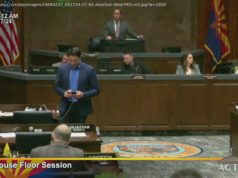The bank deserved to pay for its reprehensible transgressions. But our columnist asks whether further punishment may just be hurting the shareholders.
Wells Fargo investors got yet another nasty surprise last week when the beleaguered banking giant announced first quarter earnings: Regulators are seeking another $1 billion to settle charges related to mortgage rate extensions, auto loans, risk compliance and other “past matters,” the bank said.
That comes on top of the $4.25 billion the bank set aside last year for liabilities related to its fake accounts scandal and the mortgage-backed securities issues it had before the financial crisis. It also paid a fine of $185 million in 2016 over the accounts scandal.
In February, the Federal Reserve took Wells Fargo to the woodshed, ruling that the bank could not expand its balance sheet beyond the nearly $2 trillion in total assets that it reported at the end of 2017; it’s believed to be the first time the Fed has imposed such a curb on growth at a major bank. “We cannot tolerate pervasive and persistent misconduct at any bank,” said former Fed chairwoman, Janet Yellen, as she announced the move on her last day in the job.
Even President Trump, ordinarily a champion of bank deregulation, piled on, saying on Twitter in February that fines and penalties against Wells Fargo for “their bad acts against their customers and others” will be “pursued and, if anything, substantially increased.”
I’ve been a harsh critic of Wells Fargo’s previous management for fostering a culture of rule breaking and customer abuse, and for marginalizing as disloyal and even firing anyone at the bank with the courage and integrity to try to stop the illegal practices.
But when I saw last week’s announcement of the new $1 billion penalty, which might be announced as soon as Friday, even I had to wonder: Has Wells Fargo been punished enough?
After all, the bank’s bad management is gone. Whether they’ve paid adequately for their multiple transgressions is an open question — no one has gone to jail, or even faced criminal charges. But Wells Fargo shareholders have been battered, with the company’s stock down about 16 percent this year, while shares of banking rivals like JPMorgan and Bank of America have fared much better, both with slight gains.
Over the past five years, a period that spans Wells Fargo’s fake accounts scandal, the comparison is even more dramatic: shares in JPMorgan and Bank of America have more than doubled. Wells Fargo’s stock has gained just about a third.
“People did this, not the bank,” said Charles M. Elson, a professor and director of the John L. Weinberg Center for Corporate Governance at the University of Delaware. “The behavior was reprehensible and they should have paid the price. But putting the onus on the corporation is a double whammy for shareholders. They were harmed by the actions of management and now they’re paying again.” (As a shareholder himself, Mr. Elson has felt the pain.)
The cost to Wells Fargo of the various scandals and related lawsuits and investigations isn’t limited to the billions it has had to set aside for penalties and other liabilities. The bank has also had to defend itself in regulatory proceedings and various civil lawsuits, including class actions filed by wronged customers, and it has had to conduct multiple internal investigations that revealed even more wrongdoing.
In a windfall for the legal sector, the bank has had to hire a horde of expensive lawyers, consultants and others to handle the fallout, an enormous management task in its own right. Wells Fargo recruited Allen Parker, one of the country’s most highly regarded (and highly paid) banking lawyers — who recently completed his tenure as presiding partner at Cravath, Swaine & Moore, and — as its new general counsel to oversee the sprawling legal problems.
Wells Fargo hasn’t said how much it has spent in legal fees and related expenses, but it has clearly had a material impact on the bank’s results. The costs show up in its efficiency ratio, which is overhead divided by revenue. Wells Fargo has traditionally aimed for between 55 and 59 percent.
At the end of last year, Wells Fargo’s ratio was 76.5 percent.
Stripping out a $3.25 billion charge the bank took in the fourth quarter last year, it was still an elevated 61.5 percent. Wells Fargo’s chief executive, Tim Sloan, called the ratio “completely unacceptable.”
A Deutsche Bank managing director and bank analyst, Matt O’Conner, has been pressing Mr. Sloan at earnings conferences for more clarity on expenses and legal liability, but the bank’s chief executive has resisted. “I’d love to live in a world where I can give you an absolute guarantee and certainty, but it’s just not the world we live in,” he said during an earnings call last year.
Mr. O’Connor told me this week that there’s no question the bank’s expenses, driven by litigations costs, “are bloated,” which shows up in the weak efficiency ratio.
He also pointed to intangible costs, such as management distraction. “It’s hard to optimize the rest of your costs when all this is going on,” he said.
There may be light at the end of the tunnel for battered shareholders. Mr. O’Connor has a “buy” rating on the stock, arguing that at this point potential legal liabilities are already reflected in the share price, and eventually costs will come down as the litigation and regulatory issues are resolved.
The Fed is also expected to lift its cap on Wells Fargo’s assets at some point. It gave the bank 60 days to submit evidence that it had reformed its risk controls and compliance mechanisms. Still, the new Fed chairman, Jerome Powell, said the bank should expect to have its growth constrained for “a significant period.”
As for the individuals involved, many have paid a price. At the top, the board fired the former chief executive, John Stumpf, as well as Carrie Tolstedt, who led the community banking division responsible for the fake accounts. The bank clawed back $69 million from Mr. Stumpf and $67 million from Ms. Tolstedt (though both are still enormously wealthy — Mr. Stumpf left with deferred compensation and stock valued at over $130 million, even after the clawbacks. Ms. Tolstedt left with over $124 million before clawbacks.)
Several midlevel managers were also fired along with more than 5,300 employees at the branch level, where most of the fake-account misconduct took place.
The board itself has been purged (or “refreshed,” as the bank puts it). Four longtime directors will depart later this month, reducing the board size to 12 members.






